Get To Know Our Hops
Interesting Facts
- Hops are actually the flowers of the hop plant.
- Historically, hops were used to keep bacteria out of the drinking water during long journeys at sea.
- Hops are not only used to make beer! These flowers have been used to treat a variety of health conditions for many years.
-
Most of the hops grown on our farm are used for crafts. We also dry several BINES to be sold for event decorations.
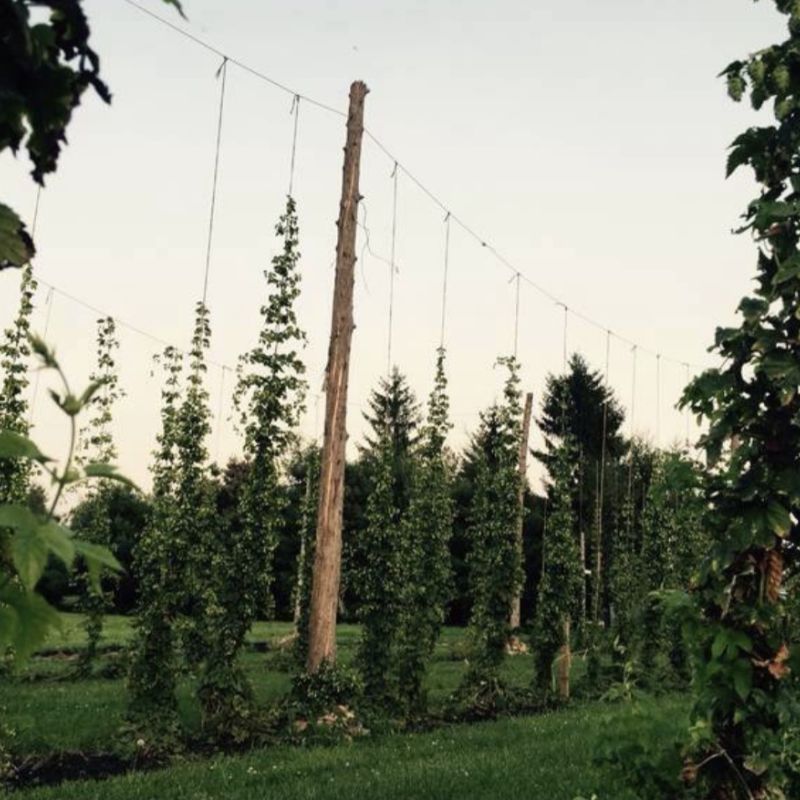

Planting
- At Hopenhagen Farm we first submit a soil sample to test our nutrient levels.
- Our land is well drained and follows a gentle slope, graced with consistent sunlight to support growth!
- Early July marks the planting of our new vegetation. Once situated 3 feet apart in the ground, we then use weed blocking paper and mulch to keep the soil moist while discouraging pests and weeds.
- Established plants are attended to and re-mulched.
- Drip ground irrigation is our method to ensure the hops receive plenty of water.
Growing
- Once the hops are between 2 and 4 inches above the ground come spring time, we burn the plants back with a flame thrower. This aids in disease prevention following the winter months.
- At Hopenhagen Farm coir rope (coconut fiber) is used to string the plants. We tie the rope to the high rise cables and secure the ends in the ground with a “w” clip. The coir rope trains clockwise, 3 to 4 vines per plant.
- During the growth phase it is crucial to keep the rows free from weeds and grass. Additionally, we monitor the upward growth of the vines along the coir rope. The coir rope and vine pair is referred to as a “bine”.
- Our high cable is about 22 feet above ground. Yes, the hop vines grow that high!
- The hops reach their full height in June, with the development of their side “arms” in July. August marks growth of flowers as the hops “burr out”!
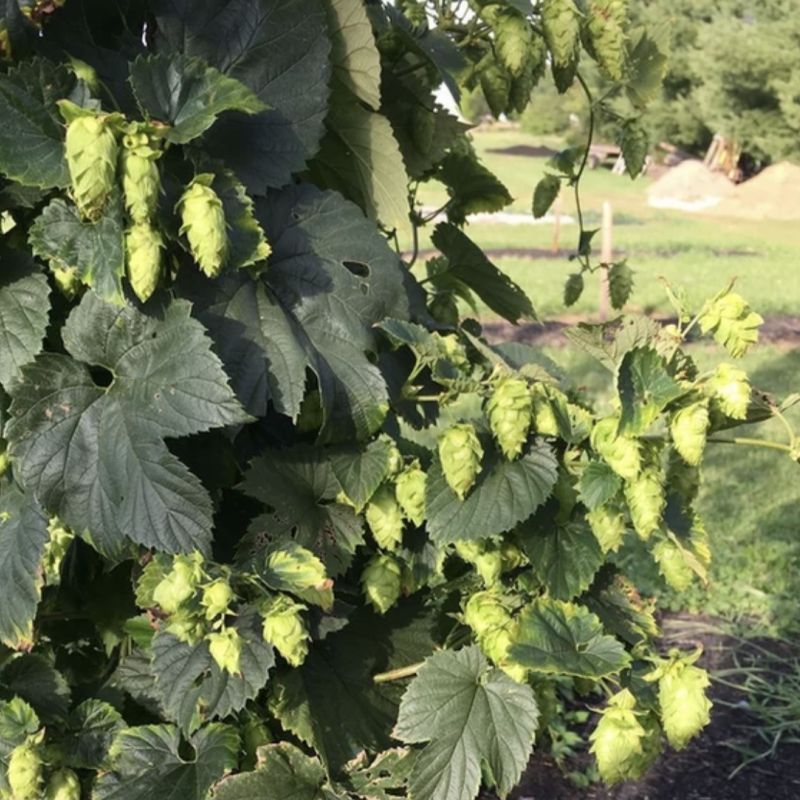
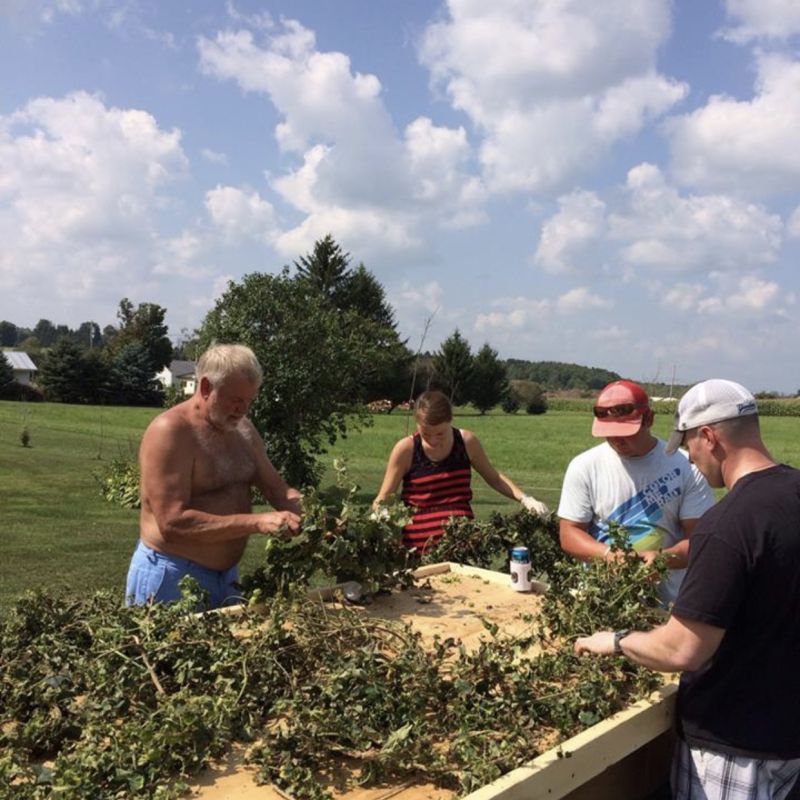
Harvest
- Hop harvesting for our variety takes place from mid to late August through early September.
- At Hopenhagen, we smell the hops, split them in half, checking the lupulin glands to see if they are shiny and golden. Finally we assess the dry matter content to confirm the hops have reached 21 to 25 percent. If so, that leaves one week to get them harvested!
- The bines are cut to a 3 foot height from ground level.
- Hop cones can be hand picked off the bine or with machinery. We put our bines through a hop harvester that handles the separation of the cones from the bine, expediting our process.
-
After harvesting we put the hop cones in our hop dryer trailer. We have a two stage drying process utilizing fans, heat and humidity control. The hops are tested throughout the drying process for moisture content. Hops are dried to 9-10% moisture range to be stable for storage.
Post-Harvest Maintenance
- The 3 foot vines are cut 1 to 2 inches from the ground at the end of fall.
- Manure is spread on the hops.
- The hop season comes to a close and we all are very “HOPPY!”
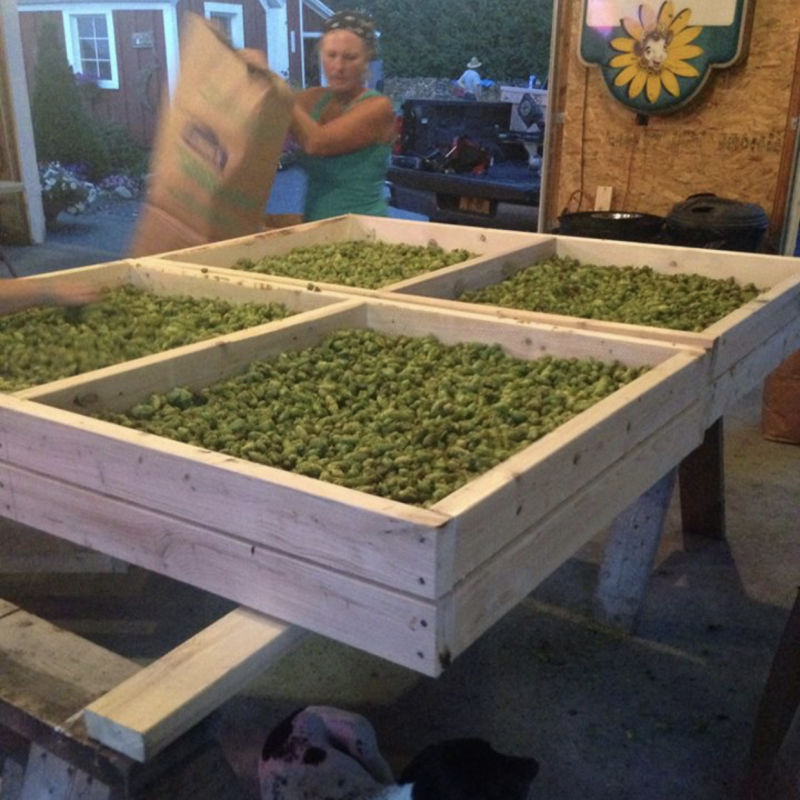
Get To Know Our Lavender
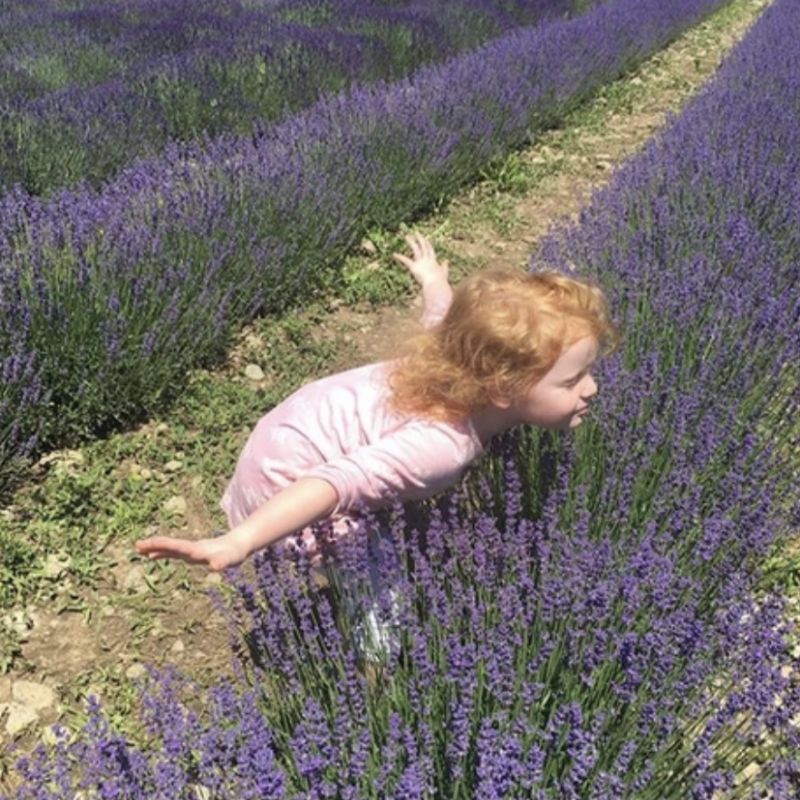
Interesting Facts
- Some of the numerous health benefits of lavender include sleep aid, bug repellent, calming of the nervous system, improve blood circulation, digestion facilitation, immune support, as well as for skin and hair care.
- Lavender essential oil can be used in various forms including aromatherapy, gels, infusions, lotion and soaps.
Planting
- Our lavender is planted in raised beds using a mixture of compost, stone, sand, and topsoil to create a bountiful mound.
- As for the hops, we also use weed block paper and gravel to protect the lavender. The gravel traps the heat while absorbing water around the base of the plant. Lavender does not like to get its feet wet!
- We carefully plant the lavender 3 feet apart.
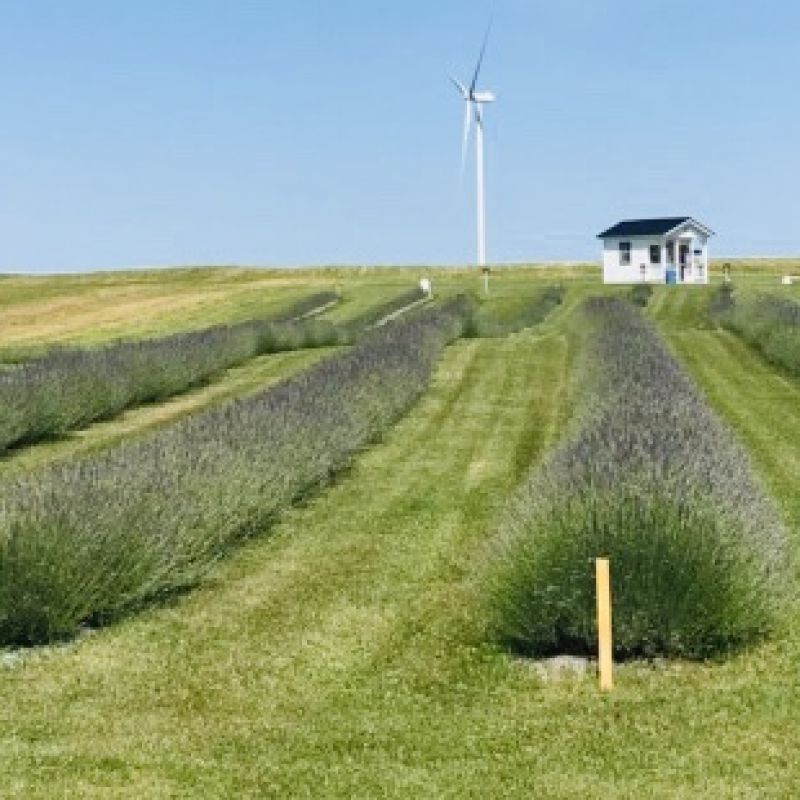
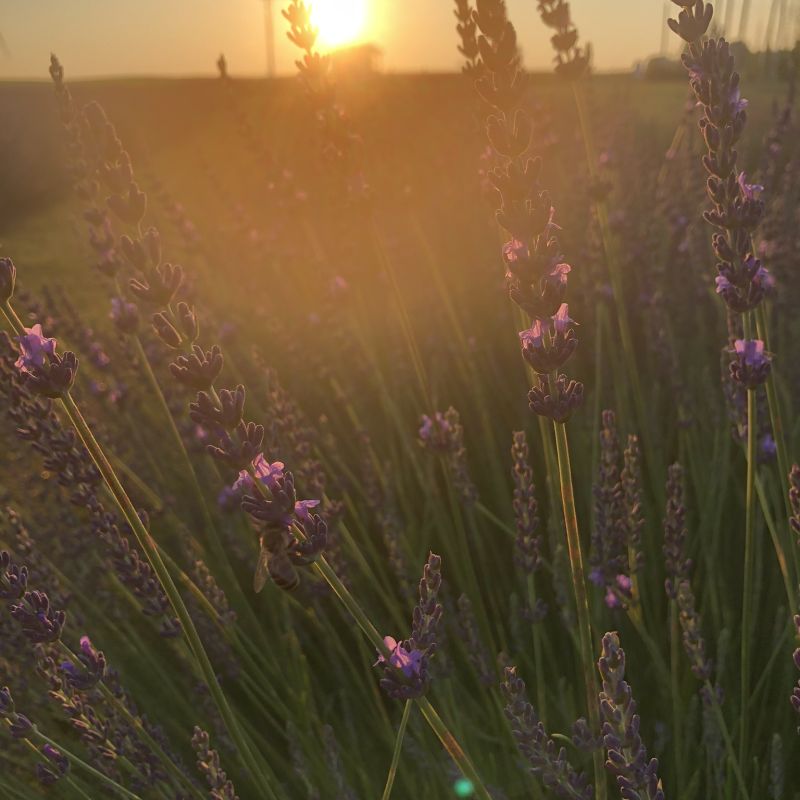
Growing
-
We grow Phenomenal, Edelweiss, Hidcote, Sensational, Super Blue, Big Blue, Munstead and Melissa Lilac lavender varieties.
-
Keep the plants clear from weeds!
- Hopenhagen closely monitors water levels in order to maintain the dry environment it demands.
Harvesting
- Sprigs of lavender are ready to harvest when you see the bloom begin opening at the top of inflorescences. The oils are stored in the buds, not open flowers that brown and detach once dry!
- Lavender buds should be harvested and cut during dry weather to avoid molding.
- We cut our lavender at a length to meet your custom needs — longer for crafts and medium for dry bunches!
- The stalks are assembled in bunches the size of a half dollar, fastened together with rubber bands. Soon after we take the bunches to our drying area to be hung inverted with ample space allowing for adequate air flow. At Hopenhagen Farm we dry bunches in a cool, airy, and dark area.
- Although there are many conflicting notions concerning lavender drying, we find direct sunlight as a drying method results in faded flowers!
-
Drying times vary according to environmental conditions, however, ours dried in our open barn with fans typically is complete within 1.5 to 2 weeks. Because of high humidity this year, we utilized our hop dryer as a second stage to fully dry our lavender. Be sure drying has finished—if not you will get mold!
- Lavender for consumption needs to be dried in a 20C licensed kitchen, a milestone that may be in our future!
- This past year we were fortunate to produce multiple successful harvests!
-
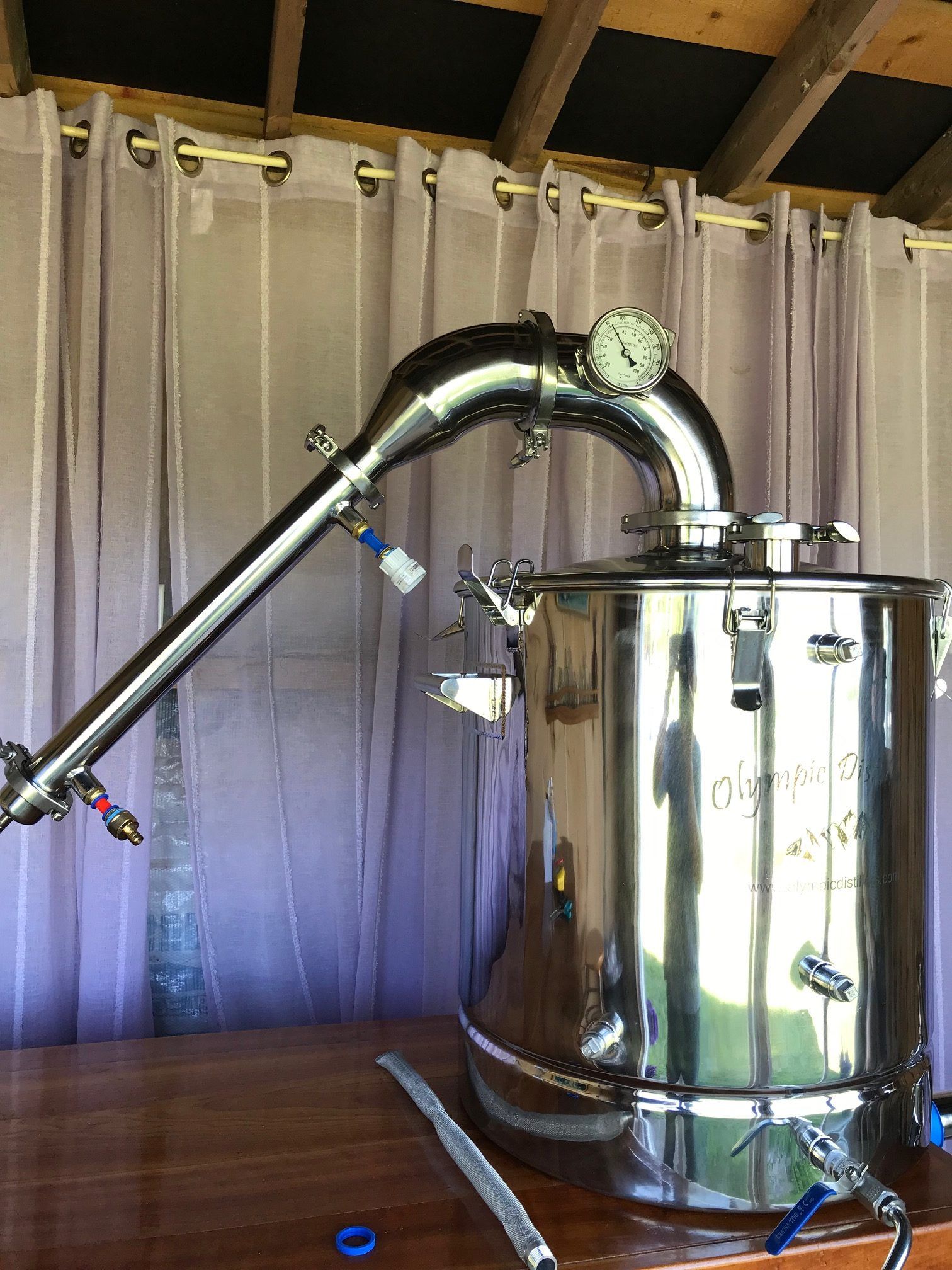
This year we started distilling our lavender for essential oil. We are using a steam distillation method. It takes a lot of lavender to make essential oil!
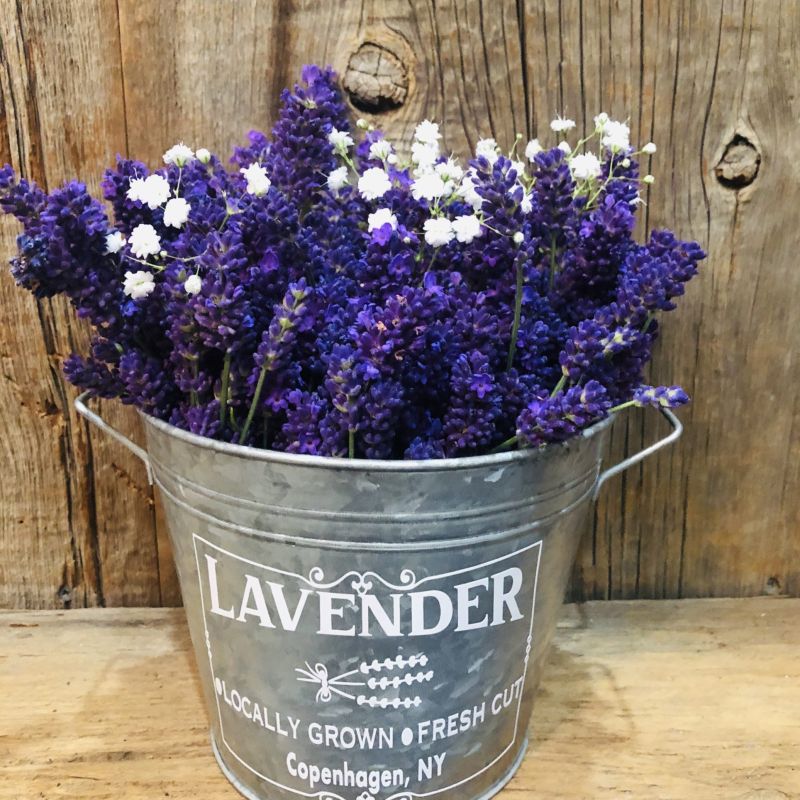
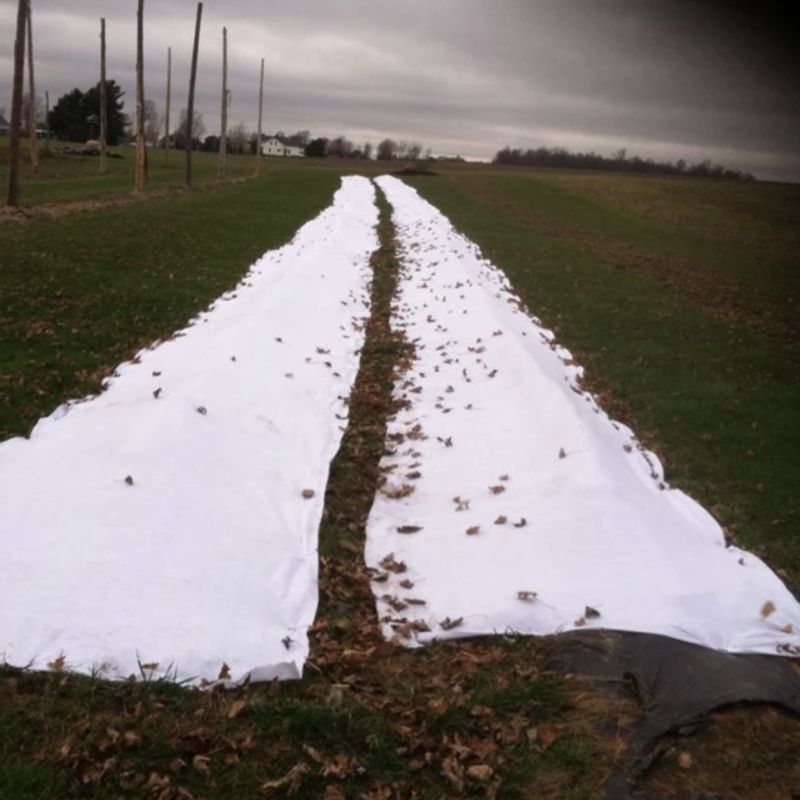
Post-Harvest Maintainence
- During late August or early September we begin to cut back the plants to 3 inches or three leaf pairs above the woods stem area. This year we cut back later in September due to the warmer fall weather we had!
- Our protective frost blankets cover the lavender for the season once the weather hits a consistent cold temperature. This year our cover took place in November, and previous years remained open through mid-November!
- After the plants have been covered, we start praying extra that they make it through our harsh upstate NY winters!